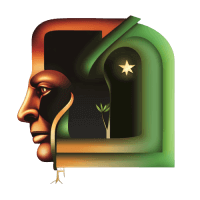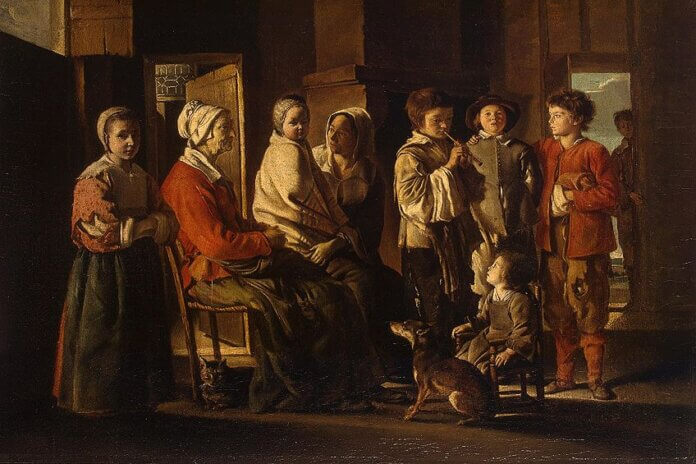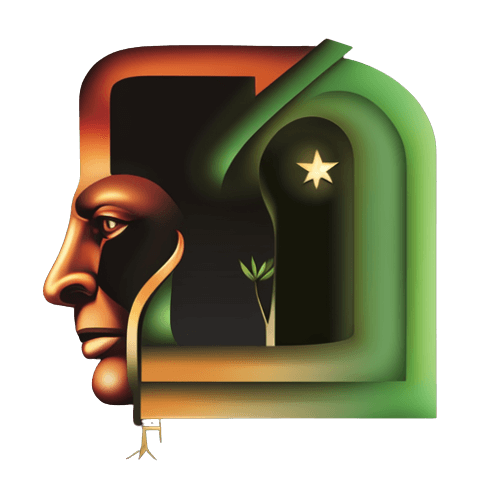Table of Contents
Introduction
The 17th century stands as a pivotal period in the annals of art history, marked by the emergence of an influential artistic movement known as Baroque. Characterized by its dynamic compositions, emotional intensity, and ornate details, Baroque art transcended the realms of canvas and sculpture to profoundly shape the culture, politics, and society of its time. In this article, we embark on a journey through the captivating world of Baroque art, exploring its impact on the 17th-century cultural landscape and its enduring legacy that continues to influence contemporary artistic expressions.
1. Baroque: A Revolution in Artistry
The Baroque movement, originating in Rome in the early 17th century, introduced a dramatic departure from the artistic norms of the Renaissance era. It championed a dynamic visual language characterized by grandeur, theatricality, and an unabashed celebration of emotion. Baroque art aimed to evoke visceral reactions and immerse viewers in elaborate narratives.
2. Cultural Context: The Power of the Counter-Reformation
The timing of the Baroque movement was no coincidence. It emerged against the backdrop of the Counter-Reformation, a significant religious reform led by the Catholic Church to counter the growing influence of Protestantism. Baroque art became a powerful tool for conveying religious fervor and engaging the senses of the faithful, leading to the creation of awe-inspiring churches and religious artworks.
3. Beyond Religious Themes: Capturing Contemporary Realities
While deeply intertwined with religious themes, Baroque art also reflected the realities of the 17th century. Artists depicted scenes of opulence, opulent court life, and powerful rulers. This fusion of the divine and the earthly gave rise to a complex visual narrative that mirrored the intricate layers of society.
4. Theatricality and Movement: Caravaggio’s Influence
Michelangelo Merisi da Caravaggio, a renowned Baroque artist, harnessed the interplay of light and shadow to create arresting compositions that resembled scenes from a theater. His mastery of chiaroscuro, the contrast between light and darkness, imbued his artworks with a palpable sense of drama and immediacy.
5. Rembrandt’s Mastery: Light and Humanity
In the Dutch Republic, Baroque art took a distinctive turn under the influence of Rembrandt van Rijn. Renowned for his mastery of light and shade, Rembrandt’s paintings delved into the inner world of his subjects, capturing their humanity and vulnerabilities. His portraits revealed the human condition in all its intricacies.
6. Architectural Marvels: Baroque in the Built Environment
Baroque architecture reshaped the urban landscapes of Europe, yielding iconic landmarks such as the Palace of Versailles and St. Peter’s Basilica. Characterized by grandiose facades, lavish ornamentation, and expansive interiors, Baroque buildings were designed to overwhelm and awe visitors.
7. Music and Opera: A Harmonious Confluence
The influence of Baroque extended beyond visual arts to music and opera. Composers like Johann Sebastian Bach and George Frideric Handel embraced the period’s emphasis on emotion and drama, infusing their compositions with intricate melodies and elaborate ornamentation.
8. Shaping Societal Norms: Beauty, Status, and Wealth
Baroque art’s opulence and grandeur influenced societal norms, with the upper echelons of society emulating the extravagance depicted in artworks. The pursuit of beauty, status, and wealth became intertwined with the aesthetics of the Baroque era.
9. Expanding Geographical Horizons: The Global Spread
The reach of Baroque art extended far beyond Europe, with its influence felt in colonial territories and beyond. Missionaries and explorers carried Baroque aesthetics to Latin America and Asia, resulting in a fusion of European styles with indigenous cultures.
10. Legacy and Contemporary Reverberations
The legacy of Baroque art endures through the ages. Its influence can be traced in various artistic expressions, from fashion and film to contemporary architecture and design. The movement’s emphasis on emotion, drama, and the interplay of light and shadow continues to resonate with artists seeking to evoke visceral reactions in their audiences.
11. Reviving Baroque Aesthetics: Neo-Baroque
While the Baroque era officially ended in the 18th century, its influence experienced a resurgence in the 19th and 20th centuries through the Neo-Baroque movement. Artists and architects drew inspiration from the opulence and drama of Baroque art, infusing these elements into their own creations.
12. Baroque in Modern Pop Culture
The Baroque aesthetic continues to captivate modern pop culture. Its opulent and dramatic elements are often featured in fashion design, theatrical performances, and visual storytelling in film and television. The opulence and excess celebrated by Baroque art find resonance in contemporary visual spectacles.
13. Reflections of Power: Political and Social Interpretations
Baroque art’s grandiosity was often harnessed to convey political and social messages. Rulers and monarchs commissioned artworks that projected their power and magnificence. The intricate symbolism woven into these artworks offered insights into the prevailing power dynamics.
14. Aesthetic Excess and Art Criticism
While celebrated for its splendor, Baroque art was not without its critics. Some art theorists and critics viewed its aesthetic excess as a reflection of the decadence and moral decline of society. The tension between exuberance and restraint became a subject of intellectual discourse.
15. Museums and Preservation: Safeguarding Baroque Heritage
In the modern era, the significance of Baroque art has led to the establishment of museums and institutions dedicated to its preservation. Art conservators work diligently to restore and protect Baroque masterpieces, ensuring that future generations can experience the art’s magnificence.
Conclusion: A Legacy of Splendor
The impact of Baroque art on the 17th century is undeniable. Its grandeur, emotional depth, and theatricality revolutionized the artistic landscape, leaving an indelible mark on culture, religion, and society. As we reflect on this period, we recognize that the echoes of Baroque art continue to resonate, reminding us of the power of artistic expression to shape perceptions, challenge norms, and inspire change.
Moreover, the impact of Baroque art on the 17th century was profound and far-reaching, shaping not only the artistic landscape of its time but also the very fabric of society, culture, and spirituality. Its legacy, carried forward by generations of artists and enthusiasts, serves as a testament to the enduring power of human creativity and expression. As we continue to navigate the complexities of the modern world, we can look to the Baroque era as a source of inspiration, a guidepost reminding us that art has the capacity to touch the soul, challenge conventions, and create lasting connections across time and space.



